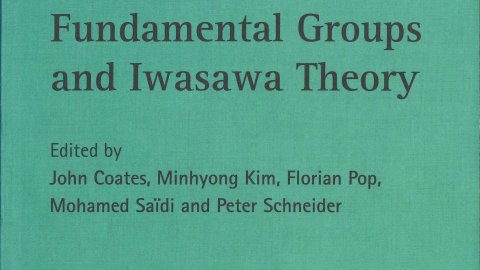Killed Brownian motion with a prescribed lifetime distribution and models of default
Abstract
In finance, the default time of a counterparty is sometimes modeled as the
first passage time of a credit index process below a barrier. It is
therefore relevant to consider the following question:
If we know the distribution of the default time, can we find a unique
barrier which gives this distribution? This is known as the Inverse
First Passage Time (IFPT) problem in the literature.
We consider a more general `smoothed' version of the inverse first
passage time problem in which the first passage time is replaced by
the first instant that the time spent below the barrier exceeds an
independent exponential random variable. We show that any smooth
distribution results from some unique continuously differentiable
barrier. In current work with B. Ettinger and T. K. Wong, we use PDE
methods to show the uniqueness and existence of solutions to a
discontinuous version of the IFPT problem.
Quantifying and reducing systemic risk
Abstract
Systemic risk in financial markets occurs when activities that are beneficial to an agent in isolation (e.g. reducing microprudential risk) cause unintended consequences due to collective interactions (usually called macroprudential risk). I will discuss three different mechanisms through which this occurs in financial markets. Contagion can propagate due to the market impact of trading among agents with strongly overlapping portfolios, or due to cascading failures from chains of default caused by networks of interlinked counterparty exposures. A proper understanding of these phenomena must take both dynamics and network effects into account. I will discuss four different examples that illustrate these points. The first is a simple model of the market dynamics induced by Basel-style risk management, which from extremely simple assumptions shows that excessive leverage can give rise to a slowly rising price bubble followed by an abrupt crash with a time period of 10 - 15 years. The model gives rise to a chaotic attractor whose time series closely resembles the Great Moderation and subsequent crisis. We show that alternatives to Basel can provide a better compromise between micro and macro prudential risk. The second example is a model of leveraged value investors that yields clustered volatility and fat-tailed returns similar to those in financial markets. The third example is the DebtRank algorithm, which uses a similar method to PageRank to correctly quantify the way risk propagates through networks of counterparty exposures and can be used as the basis of a systemic risk tax. The fourth example will be work in progress to provide an early warning system for financial stress caused by overlapping portfolios. Finally I will discuss an often neglected source of financial risk due to imbalances in market ecologies.
PhD student talk (On robust pricing--hedging duality in continuous time)
Abstract
We pursue robust approach to pricing and hedging in mathematical finance. We consider a continuous time setting in which some underlying assets and options, with continuous paths, are available for dynamic trading and a further set of European options, possibly with varying maturities, is available for static trading. Motivated by the notion of prediction set in Mykland [03], we include in our setup modelling beliefs by allowing to specify a set of paths to be considered, e.g. super-replication of a contingent claim is required only for paths falling in the given set. Our framework thus interpolates between model--independent and model--specific settings and allows to quantify the impact of making assumptions or gaining information. We obtain a general pricing-hedging duality result: the infimum over superhedging prices is equal to supremum over calibrated martingale measures. In presence of non-trivial beliefs, the equality is between limiting values of perturbed problems. In particular, our results include the martingale optimal transport duality of Dolinsky and Soner [13] and extend it to multiple dimensions and multiple maturities.
PhD student talks
Abstract
Pengyu Wei's title: Ranking ForexMaster Players
Abstract:
In this talk I will introduce ForexMaster, a simulated foreign exchange trading platform, and how I rank players on this platform. Different methods are compared. In particular, I use random forest and a carefully chosen feature set, which includes not only traditional performance measures like Sharp ratio, but also estimates from the Plackett-Luce ranking model, which has not been used in the financial modelling yet. I show players selected by this method have satisfactory out-of-sample performance, and the Plackett-Luce model plays an important role.
Alissa Kleinnijenhuis title: Stress Testing the European Banking System: Exposure Risk & Overlapping Portfolio Risk
Abstract:
Current regulatory stress testing, as for example done by the EBA, BoE and the FED, is microprudential, non-systemic. These stress tests do not take into account systemic risk, even though the official aim of the stress test is the "test the resilience of the financial system as a whole, and the individual banks therein, to another crisis".
Two papers are being developed that look at the interconnections between banks. One paper investigates the systemic risk in the European banking system due to interbank exposures, using EBA data. The other paper, looks at the trade-off between individual and systemic risk with overlapping portfolios. The above two "channels of contagion" for systemic risk can be incorporated in stress tests to include systemic components to the traditional non-systemic stress tests.





